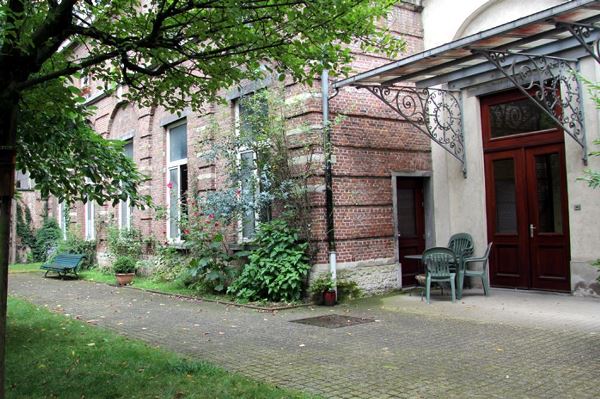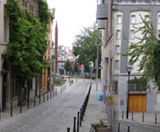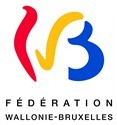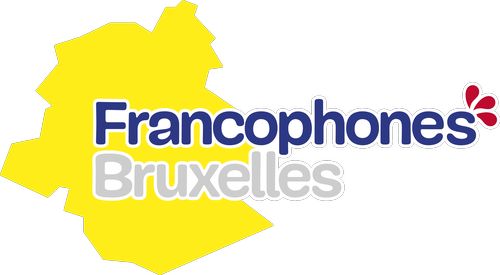New videos (only partially in English)
Summary, abstracts and full texts of issue no. 111
Philippe Mesnard (Editor in chief): Editorial: Voyages mémoriels en question (pdf in French) (pdf in Dutch) [Questions concerning visits to memorial sites]
Dossier: Dangerous game between Art and Propaganda
Edited by Luba Jurgenson and Philippe Mesnard
Luba Jurgenson and Philippe Mesnard: Présentation (pdf)
Iveta Slavkova (HAR, Paris-Ouest-Nanterre-La Défense University): Le futurisme entre propagande et revendication libertaire (pdf) [Futurism between propaganda and demands for freedom]
- The vital futuristic project is a political project that aims to transform society through the creation of a new man (Superuomo) strong, domineering, industrial, and urban. The Futurists want to persuade everyone of the legitimacy of their proposals and they are exerting a lot of effort through the use of words and images, to achieve their goal. Therefore, it is not surprising to find similarities between these futuristic images and those employed in propaganda: the use of stereotypes, heroes, to rally emotional support rather than a profound analysis of political and social realities.
Through a few selected images, we will focus on the visual strategy of the futurists, aggressive and innovative, which aims to “sollicit” and pay tribute to the audience. We will notice that the form that appears as free and open is actually carrying a binding and homogenizing message. This rhetoric is also found in the very definition of the futuristic new man who wants to be free, but is actually predetermined, who wants to be multifaceted all the while remaining molar.
Thus, this reflection on futurism will allow us to question the limits and ambiguities of the universal assertions and the certainty of serving universal values that we also observe in propaganda images. Are the Futurists, in essence, purposely misusing universalism and universal values? Or conversely, do they express the essence of universalism that requires a constraining homogenization?
Luba Jurgenson (Paris-Sorbonne University): La littérature factographique : propagande et débats sur le statut de l'oeuvre d'art en URSS à la fin des années 1920 (pdf) [Factographic literature: propaganda and debates on the status of works of art in the USSR at the end of the 1920’s]
- The two texts by Sergei Tretyakov present the ideological and literary programme of the group Front Gauche de l'Art [Left Front of Art], a follower of Futurism and more precisely of it's constructivist tendency. This is to promote the “factographical” literature against the traditional genres, especially the novel. The new aesthetic design inspired by the journal is opposed to the psychological prose, is an art for the masses, which should allow everyone to become a creator. From this perspective, it's the industrial process that dictates its laws to art, not only to the extent that it becomes the subject of representations, but also as it imposes a serial and collective mode of production, setting an end to the reign of the individual author and subjective visions of the world.
Lada Umstätter (Curator of the Fine Arts Museum of La Chaux-de-Fonds), Gabriel Umstätter (Compiler and organizer of exhibitions): De Lénine à Gueglov : les avatars du héros dans la statuaire soviétique et postsoviétique, de la construction à la fiction (pdf) [From Lenin to Gheglov: avatars of the hero in Soviet and post-Soviet statuary, from construction to fiction]
- A review of the history Soviet and post-Soviet sculpture, focused on a few of the main heroes that have been portrayed, and with a special focus on the personalities and iconographic figures who withstood leadership changes and political alignments: from Lenin to contemporary leaders, to Gagarin, the Russian emperors, writers, popular characters, the heroes of Soviet books and films.
Vicente Sánchez-Biosca (Valencia University): La terreur en images : L’ « occupation rouge » dans la propagande franquiste pendant la guerre civile espagnole (pdf) [Terror in images: the “red occupation” in Francoist propaganda during the Spanish Civil War]
- Among the types of Franco propaganda in Spain, a priority should be given to the story of the “Red Terror”, a range of abuses, tortures and perversions attributed to the officials of the area under Republican control. The city of Madrid plays a very important role: a city under siege almost from the beginning of the conflict, the capital becomes both a symbol of courage (the fifth column whom acted internally) and of terror. Two figures stand out among the executioners described by the novels and painted posters, photography and cinema: the anarchist militia, delinquent and cruel, and the methodical and relentless Communist. The film Rojo y negro [Red and black], referring to the colors of the battalion flag, retraces the “exploits” of these figures in a city subject to chaos. A young woman originating of Phalangist belief plays the dual role of hero and martyr and suffers punishment both for her resistance and for being a woman. This paper analyzes the iconography of the composite of the anarchist and communist enemy, as constructed by Franco propaganda.
Claire Aslangul (Paris-Sorbonne University/IRICE): Le dessin animé : véhicule « idéal » des stéréotypes nazis (pdf) [The comic strip: an “ideal” medium for transmitting Nazi stereotypes]
- Under Hitler’s rule, animated films played a role that current studies take very little into account. We find animated sequences in advertising, propaganda films and small educational “documentaries”, but genuine works of fiction also emerged.
Targeting wide audiences, these works propagated in a disturbing manner the Nazi ideology and most notably, the “theory of races”. If Goebbels provides them with considerable financial resources, it is because they fit perfectly with the idea that “indirect” propaganda is more effective than straightforward propaganda (“great art, is to educate without the individual being educated noticing that they are being manipulated” Goebbels, February 15, 1941).
Using color technology as a tool, in small naïve stories, directors use the full emotional potential of the dark room to contribute to the conception of stereotypes. There are also some interesting phenomena of the euphemistical use of violence; the comparison with other types of film productions – the “realistic” news and documentaries in particular – illustrates a specific feature of cartoons: in addition to the “educational” aspect, there is also an escape into a fantasy world.
Marnix Beyen (Antwerp University): Le piège de l’essentialisme. Thyl Ulenspiegel entre littérature et propagande (pdf) [The snare of essentialism: Thyl Ulenspiegel between literature and propaganda]
- The literary figure Thyl Ulenspiegel has played an important role in the political propaganda of diverse political groups in Belgium. Through a genealogy of the Ulenspiegel pattern it is shown in this paper that it does not concern a shameless political recovery of a literary theme. In La légende d’Ulenspiegel (1867), the book by Charles De Coster, that deeply influenced the image of Ulenspiegel, literary and political strategies were intimately intertwined. They transformed the traditional joker Ulenspiegel into a central figure of the epic and essentialist story telling the centuries-long struggle of a nation. This was the way how Ulenspiegel could become a recognizable figure, especially in the Flemish nationalist political propaganda.
Geneviève Van Cauwenberge (Liege University): The Atomic Café : propagande ou contre-propagande ? (pdf) [The Atomic Café: propaganda or counter-propaganda?]
- Produced in 1982, in the early Reagan years, The Atomic Café is a political film that aims to denounce, in a humoristic manner, the silence of the U.S. government about the dangers of nuclear power and intends to warn its contemporaries against the propaganda used by the Reagan administration to justify its militaristic policy. Consisting of a diverse collage of images of American propaganda in the 40s and 50s, proliferated in the media, the film has neither voice-over nor interview. The directors’ views are expressed through the editing. We question the effectiveness of this device as well as the significance and pitfalls related to the diversion of preexisting propaganda images as part of a film that claims to be politically subversive.
Other
Dominique Soulès (Lille 3 University): In Memoriam… La langue du souvenir dans le « Post-Exotisme » de Volodine (pdf) [In Memoriam… the language of memory in Volodine’s “Le Post-exotisme en dix leçons”]
- Antoine Volodine is a contemporary French novelist whose unusual work combines in a tight weave of ethics and aesthetics, abundant imagination and references to the twentieth and twenty-first centuries, dreams and politically historical denunciations, amongst which World War II and the exterminations that accompanied the war. Alto solo and Dondog are, in this regard, two particularly exemplary novels which, by a precise and biased use of language, especially in the onomastics, encourage the reader to veer off the text to remember a non-historical text and to (re)think with more accuracy than some official ceremonies of remembrance. Writing in this context, the author also raises the question of literary transmission from an individual who is not a witness: through the twists and romantic turns borrowed by his works of fiction, he brings one to ponder about the question of the spectator and the inevitable accompanying silence(s).
Anneleen Spiessens (Hogeschool Ghent): Gekleurd verleden: over geschiedenis, herinnering en mythe (pdf) [Coloured past: on history, memory and myth]
- This article focuses on the Gekleurd verleden exposition. Familie in oorlog, that took place in the beginning of 2011 in Ghent. The curators Bruno De Wever (Instituut voor Publieksgeschiedenis, UGent) and Rudi Van Doorslaer (CEGES) wanted to launch a debate about the war inflicted past and the creation of a unilateral image of Flanders during the German occupation. We study the relationship between history and memory, as it is represented in the exposition and specially, the conflicts born out of the collaborations. The confrontation between personal testimonials and historical accounts often creates myths, either linked to collaboration or to repression. Our analysis focuses on the current state of political will of memory in Belgium and the social role of the historian.
Bookstore (pdf of Book reviews)
- Jacques Semelin, Face au totalitarisme, la résistance civile [Civil resistance to totalitarianism], Brussels, André Versaille, 2011.
Review in French by Isabelle Galichon (Blaise Pascal Clermont-Ferrant II University) - Sarah Gensburger, Les Justes de France. Politiques publiques de la mémoire [The Just of France: public policies on remembrance], Paris, Sciences Po, 2010.
Review in French by Pierre Carrique (International College of Philosophy) - Jan Karski, Mon témoignage devant le monde. Histoire d’un État clandestin [The Story of a Secret State], Paris, Robert Laffont, 2010.
Review in French by Ewa Bogalska-Martin (Pierre Mendès-France University, Grenoble 2 / Pacte-CNRS UMR 5194) - Larry May, Genocide. A normative account, Cambridge University, 2010.
Review in French by Daniel Acke (Vrije Universiteit Brussels) - Yervant Odian, Journal de déportation [A deportation diary], Marseille, Parenthèses, 2010.
Review in French by Yves Ternon (Montpellier III University) - Alexandra Oeser, Enseigner Hitler. Les adolescents face au passé nazi en Allemagne. Interprétations, appropriations et usages de l’histoire [Teaching Hitler: teenagers face Germany’s Nazi past. Interpretations, appropriations and uses of history], Paris, Maison des sciences de l'homme, 2010.
Review in French by Anne Roche (Aix-Marseille University) - Juger Eichmann, Jérusalem, 1961 [Judging Eichmann, Jerusalem, 1961]
By Amandine Grillo (Catholic University of Louvain) - Nancy Berthier, Fidel Castro. Arrêts sur images [Fidel Castro in freeze frames ], Paris, Ophrys, 2010.
Review in French by Vicente Sánchez-Biosca (Valencia University) - Emilio Crenzel (ed.), Los Desaparecidos en la Argentina. Memorias, representaciones e ideas (1983-2008), Buenos Aires, Biblios, 2010.
Review in French by Nadia Tahir (Paris IV-Sorbonne University) - Pierre Guyotat, Tombeau pour cinq cent mille soldats [The tomb of five hundred thousand soldiers], Paris, Gallimard, 1987.
Review in French by Yann Sarrat (Blaise Pascal Clermont-Ferrand II University)
Some of our projects
Contact
Auschwitz Foundation – Remembrance of Auschwitz
Rue aux Laines 17 box 50 – B-1000 Brussels +32 (0)2 512 79 98
+32 (0)2 512 79 98 info@auschwitz.be
info@auschwitz.be
BCE/KBO Auschwitz Foundation: 0876787354
BCE/KBO Remembrance of Auschwitz: 0420667323
Office open from Monday to Friday 9:30am to 4:30pm.
Visit only by appointment.
![]()
![]()
![]()
![]()
![]()
Become a member
To become a member of Remembrance of Auschwitz ASBL, please contact us and transfer the sum of €50.00 to our account IBAN: BE55 3100 7805 1744 – BIC: BBRUBEBB with the communication: ‘Membership fee 2025’. The membership includes two issues of 2025 of our scientific journal.
DONATIONS
Donations of €40.00 or more (in one or more instalments) qualify for tax exemption for Belgian taxpayers.
In communication, please specify that it is a ‘Donation’ and mention your National Number which is required since 2024 to benefit from the tax exemption.
Subscribe
Error : Please select some lists in your AcyMailing module configuration for the field "Automatically subscribe to" and make sure the selected lists are enabled










 The Auschwitz Foundation was founded in 1980 by Paul Halter, an Auschwitz survivor. Replacing the Amicale Belge des Ex-Prisonniers politiques d’Auschwitz-Birkenau Camps et Prisons de Silésie, the primary objective of the Auschwitz Foundation is to study the history and memory of the victims of the Holocaust and the Nazi terror in a sustainable and systematic way. The transmission of memory and the preservation of archives concerning these events complete this goal.
The Auschwitz Foundation was founded in 1980 by Paul Halter, an Auschwitz survivor. Replacing the Amicale Belge des Ex-Prisonniers politiques d’Auschwitz-Birkenau Camps et Prisons de Silésie, the primary objective of the Auschwitz Foundation is to study the history and memory of the victims of the Holocaust and the Nazi terror in a sustainable and systematic way. The transmission of memory and the preservation of archives concerning these events complete this goal.





